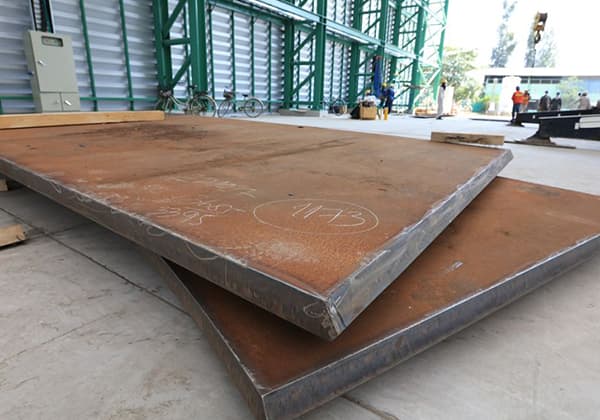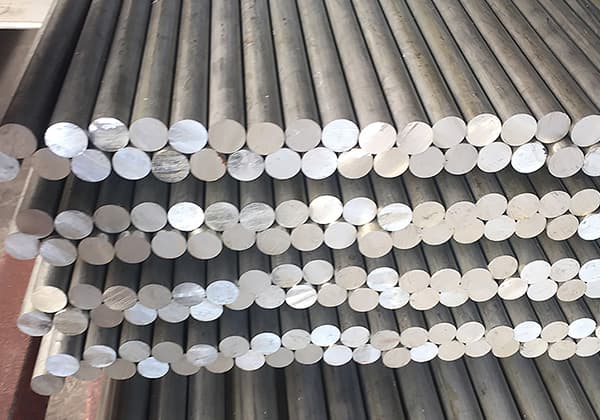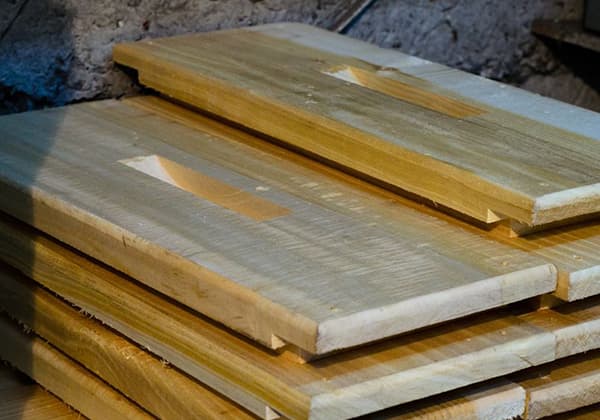
Have you ever wondered what makes modern spacecraft so efficient and durable? Magnesium alloys, with their remarkable properties, are revolutionizing aerospace engineering. This article explores how these lightweight yet strong materials enhance spacecraft performance, reduce fuel consumption, and endure the harsh conditions of space. Readers will discover the key benefits and applications of magnesium alloys in aerospace, gaining insights into why they are indispensable in this high-stakes industry.

Since the dawn of the 20th century, humanity has been captivated by the frontier of space exploration, with major global powers investing heavily in this transformative field.
The realm of human space exploration has witnessed unprecedented growth, spanning from advanced satellite manufacturing to groundbreaking manned spaceflight missions. While we have achieved remarkable milestones, the industry continues to grapple with formidable challenges, and many critical technologies remain in their nascent stages of development.
One of the most significant hurdles in aerospace engineering is the selection of optimal materials. The choice of materials profoundly influences the performance, reliability, and efficiency of spacecraft, thus playing a pivotal role in shaping the trajectory of space exploration.
This article aims to shed light on the cutting-edge metal alloy materials suitable for aerospace applications, with a particular focus on magnesium alloys. Through rigorous research and extensive testing, magnesium alloys have emerged as a key component in the aerospace materials portfolio.
We will delve into the extreme environmental conditions that spacecraft must endure in the vacuum of space, explore the exceptional properties that make magnesium alloys stand out, and elucidate why these alloys are increasingly becoming the material of choice for spacecraft manufacturing in the aerospace sector.
Our discussion will encompass the unique combination of high strength-to-weight ratio, excellent thermal properties, and superior electromagnetic shielding capabilities that magnesium alloys offer. We will also touch upon the latest advancements in magnesium alloy metallurgy, including novel alloying elements and processing techniques that further enhance their space-worthiness.
Let’s embark on this technical journey to understand the critical role of magnesium alloys in pushing the boundaries of space exploration.

Magnesium is one of the lightest metals used in industry, and as a result, the developed magnesium alloy materials have become the lightest density of industrial metal alloys.
Related reading: World Top 10 Metal Strength Rankings

Germany began industrial production of magnesium alloys in the 1980s and first utilized them in automobile production in the 1930s. The Soviet Union followed suit and applied magnesium alloys to the aircraft production industry in the mid-1930s.
Due to the rapid rise in demand, every world power has placed significant importance on the development, research, and use of magnesium alloys through various research projects.
Magnesium alloys have several advantages, including low density, high specific strength, good thermal conductivity, and light weight. However, traditional processing methods can result in poor plasticity, so different casting methods have been developed to suit different applications.

Currently, magnesium alloys play a crucial role in various research fields. In the automobile industry, they are widely used for components such as the directional control system, gearbox housing, instrument panel, engine hood, frame, door, and others in many developed countries.
In the field of electronic communication, the excellent characteristics of magnesium alloys make them ideal for use in lightweight and thin products, bringing hope for the development of ultra-light and ultra-thin products. Many commonly used electronic components, such as cameras, televisions, laptops, plasma displays, and mobile phones, are made of magnesium alloys.
In the medical field, the good corrosion resistance and chemical and physical stability of magnesium alloys make them ideal for use as clinical medical implants.
Magnesium alloys also play an important role in many other fields and their value is immeasurable.
For spacecraft materials, they must have excellent anti-aging and anti-corrosion properties, be able to withstand and adapt to the extreme space environment, and allow the spacecraft to survive stably in space. The basic requirements for these materials are high density, strength, and stiffness.
The use of magnesium alloy materials can reduce fuel consumption, improve flight distance, and extend flight time. Additionally, aircraft require higher specific strength and stiffness and must be able to withstand static and alternating loads caused by various factors such as takeoff and landing, maneuver flight, and gusts. Therefore, fatigue resistance is of great importance in aircraft materials.
Due to its light weight, specific strength, low density, good thermal conductivity, and other excellent characteristics, magnesium alloy materials meet the requirements for aerospace materials.

Japan, the United States, Britain, and other world powers are increasing their investment in magnesium alloy material research. Currently, all countries in the world are increasing their production of magnesium alloys.
China ranks first in the world in terms of magnesium resources, origin, and exports, and has the largest reserves of magnesium metal. However, there are still many challenges in the industrial production and manufacture of magnesium alloys in China.
The production technology of magnesium alloys in China is relatively outdated, leading to low productivity, high energy consumption, and reduced economic value. The export proportion of magnesium alloys in China is also low, with almost all exports produced according to foreign brands.
The key technologies and equipment used in magnesium alloy manufacturing and processing are rarely self-developed and instead adopt foreign advanced technologies and equipment.
Materials used in aerospace often need to meet requirements for ultra-high temperature, high temperature, and high vacuum. Under extreme conditions such as high pressure, strong corrosion, and weight, the materials need to have minimum volume and mass while still fulfilling their functional requirements.
Some materials need to operate in the atmosphere or in space for an extended period without maintenance, so they must have high reliability and quality assurance.
The performance requirements of aerospace materials vary based on their working environment.
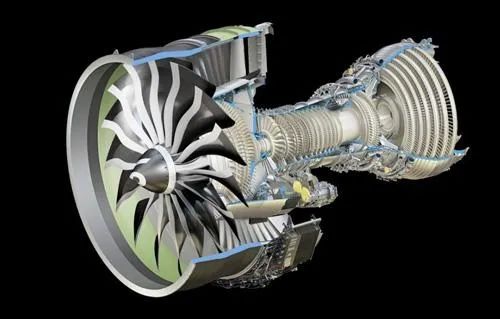
Spacecrafts experience aerodynamic heating in high-temperature environments, gas engines, and the sun’s radiation, which leads to a long exposure time in the air, sometimes at speeds up to three times the speed of sound.
Materials used in these environments must have high-temperature endurance strength, creep strength, thermal fatigue strength, air and oxidation resistance, and thermal corrosion resistance to corrosive media, with stable structures that can operate at high temperatures for an extended period.
Rocket engines can reach temperatures of over 3000°C and speeds of more than 10 Mach numbers. When the rocket engine mixes with the solid rocket fuel gas and solid particles, the head of the ballistic missile re-enters the atmosphere at speeds over 20 Mach numbers, sometimes resulting in particle erosion.
Therefore, high-temperature environments in the field of space technology usually involve high temperature and high-speed airflow, and particle erosion. In cases where materials need to be used for heat generation, high-temperature and high-viscosity materials are used in combination with physical properties such as heat and sublimation.
High temperature and solar radiation cause temperature fluctuations on the surfaces of satellites and airships in space, requiring temperature control and insulation coatings to maintain low temperatures for natural and low-temperature propellants.
When flying in the stratosphere at subsonic speeds, the surface temperature of aircraft drops to around 50°C. In the polar circle, winter temperatures can be below 40°C. To prevent embrittlement, components need metal or rubber tires. Liquid rockets use liquid oxygen (boiling point -183°C) and liquid hydrogen (boiling point -253°C) as propellants, which creates even more severe environmental conditions for materials.
Most metal materials and polymer materials become brittle under these conditions, but by developing or selecting appropriate materials, such as pure aluminum and aluminum alloys, titanium alloys, low-temperature steel, polytetrafluoroethylene, polyimide, and perfluoropolyether, the effects of various media and atmospheric environments on material corrosion and aging, temperature load-bearing capacity, and sealing problems of structures can be mitigated. This includes fuels (such as gasoline and kerosene) that come into contact with aerospace materials and rocket propellants, as well as various lubricating and hydraulic oils.
Related reading: Types of Aluminum and Aluminum Alloy
Most materials are prone to strong corrosion from both metal and non-metallic substances.
Under the influence of the sun’s radiation in the atmosphere, they expand and are further eroded by wind and rain.
Mold growth can greatly accelerate the aging process of polymer materials when stored in underground humid environments over a long period of time.
To be suitable for use in the aerospace industry, materials should exhibit good resistance to corrosion, aging, and mold.
The unique characteristics of the space environment include high vacuum (1.33 x 10 MPa) and cosmic ray irradiation.
In high vacuum, metal materials come into close contact with each other, as the surface is purified, causing the molecular diffusion process to speed up, resulting in the occurrence of “cold welding.
High vacuum and cosmic ray irradiation can cause non-metallic materials to rapidly volatilize and age.
In some cases, this can lead to the contamination of optical lens volatiles and the failure of seals due to aging.
Materials for use in space are typically selected and developed through simulations and tests conducted on the ground.
The goal of aircraft design is to choose materials that are as lightweight as possible while still providing absolute reliability, safety, and a margin for life. This is necessary for adaptation to the space environment.
When aircraft such as missiles or rockets are used only for a short period of time, the performance of materials is limited.
To fully utilize material strength and ensure safety, the “design principle of damage tolerance” is used for metal materials. This requires that materials not only have high specific strength, but also high fracture toughness.
Data such as crack initiation life and crack growth rate are determined for materials used under simulated conditions, and the allowable crack length and corresponding life are calculated.
Organic non-metallic materials must undergo natural aging and artificial accelerated aging tests to determine their life and insurance period. This is an important basis for design and production.
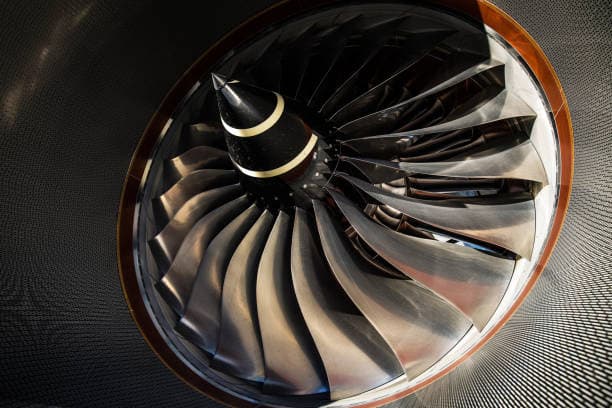
The challenge of reducing fuel load has long been a pressing issue in the aerospace industry, driving the continuous search for lightweight yet robust materials.
Among available engineering metal alloys, magnesium alloys stand out with their exceptionally low density of approximately 1.8 g/cm³, which is about two-thirds that of aluminum (2.7 g/cm³) and merely one-quarter that of steel (7.85 g/cm³). This remarkable density advantage makes the application of magnesium alloys in aerospace structures not just feasible, but highly advantageous.
Possessing the lowest specific gravity among all structural alloys, magnesium alloys enable significant weight reduction in components traditionally made from aluminum or steel, without compromising mechanical integrity. Their high specific strength (strength-to-weight ratio) allows for the design of parts that maintain or even enhance performance while dramatically reducing mass.
Consequently, magnesium alloys have found widespread adoption in aerospace applications, ranging from aircraft interiors and seat components to gearboxes and engine casings. This extensive utilization not only substantially reduces the overall weight of the aircraft structure but also significantly decreases the fuel load required for a given mission profile.
The impact of incorporating magnesium alloys on aircraft performance is multifaceted. By reducing the empty weight of the aircraft, it allows for increased payload capacity or extended range. Moreover, the lower fuel consumption translates to reduced operating costs and decreased environmental impact through lower CO2 emissions. These benefits collectively contribute to enhanced aircraft efficiency, improved flight characteristics, and increased operational flexibility.
Magnesium alloys are renowned for their exceptional combination of high specific strength and low density, making them increasingly attractive in advanced engineering applications.
Compared to aluminum alloys and steel, magnesium alloys offer superior properties in terms of strength-to-weight ratio. They typically exhibit a density approximately 35% lower than aluminum and 75% lower than steel, while maintaining competitive strength characteristics.
Consequently, magnesium alloy materials are particularly valuable in aerospace manufacturing, where weight reduction is crucial. These alloys can be utilized to produce critical components that need to withstand substantial loads while minimizing overall mass. Examples include structural elements of spacecraft cabins, engine housings, transmission casings, and landing gear components. The use of magnesium alloys in these applications can lead to significant weight savings, improved fuel efficiency, and enhanced payload capacity without compromising structural integrity or performance.
Magnesium alloys exhibit superior thermal management characteristics compared to other metal alloys, particularly in heat dissipation applications.
The thermal gradient between the base and the top of a magnesium alloy heat sink is substantially steeper than that observed in heat sinks fabricated from other alloys. This pronounced temperature differential accelerates air convection within the radiator structure, significantly enhancing its overall heat dissipation efficiency.
The high thermal conductivity of magnesium alloys (typically ranging from 51 to 156 W/m·K, depending on the specific alloy composition) contributes to this performance advantage. Additionally, magnesium’s low density (approximately 1.8 g/cm³) allows for the design of larger surface area heat sinks without incurring a significant weight penalty, further improving heat transfer capabilities.
Quantitatively, under isothermal conditions, a magnesium alloy radiator demonstrates approximately twice the heat dissipation rate of an equivalent aluminum alloy radiator. This translates to a 50% reduction in the time required to achieve a specified temperature reduction, making magnesium alloys particularly attractive for applications demanding rapid thermal management, such as in aerospace, automotive, and high-performance electronics cooling systems.
In the elastic range, magnesium alloys exhibit unique mechanical behavior when subjected to impact loads. Their high specific strength and relatively low elastic modulus allow for controlled elastic deformation, enabling these alloys to absorb substantial amounts of impact energy while maintaining structural integrity. This characteristic results in superior vibration damping properties compared to many other structural metals.
The exceptional energy absorption capacity of magnesium alloys translates into excellent shock mitigation performance. When an impact occurs, the alloy’s microstructure efficiently dissipates the kinetic energy through elastic strain, reducing the magnitude of stress waves propagating through the material. This mechanism significantly attenuates vibrations, enhancing overall structural stability and passenger comfort in aircraft applications.
Furthermore, the inherent damping properties of magnesium alloys contribute to their remarkable noise reduction capabilities. The alloy’s ability to convert mechanical energy into heat through internal friction mechanisms leads to a substantial decrease in acoustic energy transmission. This property effectively attenuates both structure-borne and airborne noise, resulting in a quieter cabin environment and reduced noise-induced fatigue in aircraft components.
The combination of superior shock absorption and noise reduction characteristics makes magnesium alloys particularly valuable in aviation applications. These properties not only enhance passenger comfort but also play a crucial role in mitigating fatigue-related issues in aircraft structures, thereby contributing significantly to overall flight safety and longevity of aircraft components. The implementation of magnesium alloys in strategic locations can lead to improved structural performance, reduced maintenance requirements, and enhanced operational efficiency of aircraft.
In the early 1900s, die casting technology was first applied to magnesium alloys, marking a significant advancement in lightweight metal forming. This process allowed for the rapid production of complex shapes with high dimensional accuracy and smooth surface finishes.
However, traditional die casting methods faced challenges in producing high-integrity magnesium alloy components. These limitations included surface defects such as cold shuts and flow lines, as well as internal quality issues like porosity and shrinkage cavities. Consequently, extensive research and development efforts have been directed towards enhancing the die casting process and advancing magnesium alloy casting technology.
Magnesium alloys possess excellent fluidity and low latent heat of fusion, making them highly suitable for manufacturing structural parts with intricate geometries and thin wall sections. These properties, combined with magnesium’s low density (approximately 1.8 g/cm³, which is 35% lighter than aluminum), make it ideal for producing lightweight components with small to medium load-bearing capacities. Common applications include automotive engine components such as oil pans and valve covers, as well as brake pedal brackets and steering wheel armatures. Recent advancements in high-pressure die casting (HPDC) and semi-solid metal (SSM) casting processes have further expanded the use of magnesium alloys in more demanding structural applications.
The impact of various media and atmospheric conditions on aerospace materials primarily manifests as corrosion and degradation. These materials are exposed to a wide range of aggressive substances, including aircraft fuels (e.g., aviation gasoline and jet fuel), rocket propellants (such as concentrated nitric acid, nitrogen tetroxide, and hydrazine), lubricants, and hydraulic fluids. Many of these substances exhibit strong corrosive or degradative effects on both metallic and non-metallic materials.
For polymer materials, the aging process can be accelerated by prolonged exposure to environmental factors such as UV radiation, temperature fluctuations, and moisture. In particular, exposure to high humidity and microbial growth in underground or poorly ventilated environments can lead to significant deterioration.
Consequently, resistance to corrosion, environmental degradation, and microbial attack are critical properties for aerospace materials. This is especially true for magnesium alloys, which are highly reactive and susceptible to rapid corrosion due to their low electrochemical potential.
Surface protection of magnesium alloys is therefore of paramount importance. While chemical conversion coatings were traditionally used, anodic oxidation has become the preferred method since the 1980s due to its superior protective properties and process control.
Recent research into protective atmospheres for magnesium alloy casting, particularly using CO2+SF6 gas mixtures, has revealed the formation of a protective film on the alloy surface. This film consists of a primary MgO layer, with F ions acting as a mediator between the MgO and liquid Mg to form MgF2. This dual-layer structure enhances the compactness and protective nature of the film.
However, due to environmental concerns associated with SF6 (a potent greenhouse gas), researchers are actively seeking alternative protective gases with lower environmental impact that still contain fluorine for effective protection.
It’s worth noting that while magnesium alloys are highly susceptible to corrosion in many alkaline environments, they exhibit excellent stability in certain spacecraft-specific alkaline conditions. This unique property makes them valuable for specific aerospace applications, provided appropriate protective measures are implemented.
Magnesium alloys demonstrate remarkable chemical stability in various organic compounds, particularly hydrocarbons like gasoline and kerosene. This resistance to corrosion and degradation in fuel environments makes them ideal candidates for specific aerospace and automotive applications.
Consequently, magnesium alloys find extensive use in the fabrication of fuel tanks for gasoline and kerosene, as well as critical engine components exposed to these fuels, such as gears, brake systems, and fuel delivery components. Their low density and high strength-to-weight ratio further enhance their suitability for these applications, contributing to overall weight reduction and improved fuel efficiency.
The aerospace industry, both in civilian and military sectors, has widely adopted magnesium alloys. A notable example is the B-25 Mitchell bomber, where magnesium alloys play a crucial role in the airframe construction. Specifically, the B-25 incorporates approximately 90 kg of extruded magnesium alloy parts and over 200 kg of magnesium alloy castings. This extensive use of magnesium alloys contributes to the aircraft’s lightweight design, enhancing its performance and range.
Beyond aircraft, magnesium alloys have found applications in advanced missile systems and satellite components. For instance, China’s HQ (Hong Qi or Red Flag) surface-to-air missile system utilizes magnesium alloys in critical structures such as the instrument compartment, aft section, and engine mounts. The alloys’ high specific strength, excellent vibration damping properties, and thermal management characteristics make them particularly suitable for these demanding aerospace applications, where weight reduction and thermal stability are paramount.
Magnesium alloys exhibit exceptional resistance to both high and low temperatures, making them well-suited for the extreme environmental conditions encountered by spacecraft. These alloys can generally withstand the thermal stresses experienced in aerospace applications, from the intense heat of atmospheric re-entry to the extreme cold of deep space.
Unlike some metal materials that are prone to softening or melting in high-temperature regions of space, magnesium alloys maintain their structural integrity. Their high-temperature resistance ensures they can withstand the thermal loads encountered during various phases of space flight, including launch and re-entry.
Simultaneously, magnesium alloys demonstrate excellent low-temperature adaptability and thermal insulation properties. This characteristic is crucial for protecting the internal components of spacecraft, ensuring their normal operation in the cold vacuum of space.
The mechanical properties of magnesium alloys are particularly noteworthy at elevated temperatures. They maintain their strength and stiffness in space environments, providing a solid foundation for structural integrity during space missions.
In the aerospace industry, material requirements for aircraft and spacecraft production are extremely stringent. Every component must meet exacting standards for performance, reliability, and safety. While meeting these requirements with conventional industrial materials can be challenging, the unique properties of magnesium alloys align exceptionally well with the demands of aerospace manufacturing.
Magnesium alloys find applications across a wide spectrum of spacecraft components, from structural elements to engine parts. Their low density significantly reduces the overall mass of spacecraft, directly translating to reduced fuel requirements and extended mission durations.
The high specific strength and specific stiffness of magnesium alloys ensure spacecraft stability and provide excellent structural performance in space. These properties contribute to the craft’s ability to withstand the stresses of launch, maneuvering, and potential impacts from space debris.
The good machinability and formability of magnesium alloys support the manufacture of complex spacecraft components, allowing for intricate designs that optimize performance and functionality.
The high damping capacity of magnesium alloys provides a reliable means of vibration suppression, crucial for protecting sensitive equipment and ensuring crew comfort in manned missions.
With their corrosion resistance, high-temperature performance, and strong compatibility with aluminum alloys (often used in conjunction in aerospace applications), magnesium alloys demonstrate strong potential for expanded use in space technologies.
The combination of these outstanding properties – lightweight, high strength-to-weight ratio, thermal stability, and processability – positions magnesium alloys as a critical material in advancing aerospace capabilities and enabling future space exploration missions.




